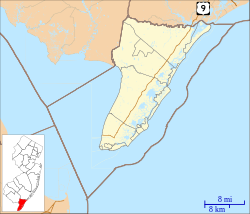Silas Condict was an American farmer, prominent surveyor, and large landowner from Morris County, New Jersey. He served as a New Jersey delegate to the Continental Congress from 1781 to 1783. Later, he served a number of terms in the State Assembly, and was its Speaker in 1792-1794 and in 1797. His name can be found in archived Congressional records @ " A Biographical Congressional Directory, 1774-1903" @ page 467, found at Google books and at Archive.org. It is found here also:, one of many Congressional Archive sources showing the Condict family.

Mount Pleasant Cemetery is a historic rural cemetery in the North Ward of Newark in Essex County, New Jersey, United States. It is located on the west bank of the Passaic River in Newark's Broadway neighborhood, opposite Kearny. It occupies approximately 40 acres and was designed by Horace Baldwin.
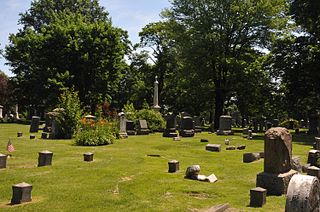
Evergreen Cemetery and Crematory is a cemetery and crematorium located at 1137 North Broad Street, Hillside, Union County, New Jersey. Parts of it are in Hillside, Elizabeth, and Newark.
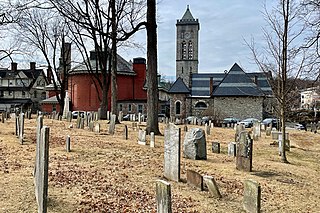
The First Presbyterian Church Cemetery is a historic churchyard cemetery of the First Presbyterian Church in Morristown, New Jersey, United States. The cemetery was added to the National Register of Historic Places, listed as a contributing property to the Morristown District, on October 30, 1973.

Charles William Sandman Jr. was an American Republican Party politician who represented Cape May County in the New Jersey Senate from 1954 to 1966 and represented southern New Jersey in the United States House of Representatives from 1965 to 1975. He ran for the Republican nomination for Governor of New Jersey three times, losing to Wayne Dumont in 1965 and William T. Cahill in 1969, but finally receiving the nomination by defeating incumbent Governor Cahill in 1973. He lost the 1973 general election to Brendan Byrne in an historic landslide.

St. Mary's Episcopal Church is a historic Episcopal parish in Burlington, Burlington County, New Jersey, United States. The original church was built in 1703. It was supplemented with a new church on adjacent land in 1854. On May 31, 1972, the new church was added to the National Register of Historic Places and on June 24, 1986, it was declared a National Historic Landmark. It is within the Burlington Historic District.

Lamington is an unincorporated community and census-designated place (CDP) located within Bedminster Township in Somerset County, in the U.S. state of New Jersey. It contains the Lamington Presbyterian Church Cemetery and the Lamington Black Cemetery.

Colestown Cemetery is in Cherry Hill Township in Camden County, New Jersey, United States, and is located at the intersection of Church Road and Kings Highway. The Gatehouse to the cemetery was listed on the National Register of Historic Places in 1975.
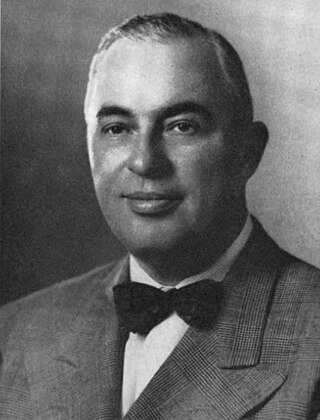
Thomas Millet Hand was an American Republican Party politician who represented New Jersey's 2nd congressional district in the United States House of Representatives for six consecutive terms from 1945 to 1956.
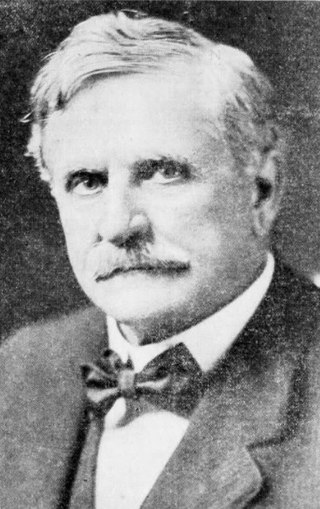
Jacob Thompson Baker was an American Democratic Party politician from New Jersey who represented New Jersey's 2nd congressional district for one term from 1913 to 1915.
Harleigh Cemetery is a historic rural cemetery located in both Collingswood and Camden, New Jersey. Harleigh Cemetery and Crematorium is one of the oldest cemeteries in New Jersey. It was named Camden County Veterans Cemetery in 2007. The cemetery covers over 130 acres (0.53 km2) of lush mature grounds situated on the Cooper River, a short drive from Philadelphia. The cemetery has been listed on the New Jersey Register of Historic Places since 1995.
Brookside Cemetery is a historic cemetery in Englewood, New Jersey.

The Old First Presbyterian Church, also known as First Presbyterian Church and Cemetery, is a church in Newark, Essex County, New Jersey, United States. The church was listed on the National Register of Historic Places in 1972. The grounds, located in the Four Corners Historic District, includes an old burial ground.

Old Upper Springfield Friends Burying Ground is a cemetery located in Springfield Township and Wrightstown, in Burlington County, New Jersey, United States.
Thomas Hurst Hughes was an 18th- and 19th-century American businessman and politician who served two terms as a U.S. Representative from New Jersey from 1829 to 1833.

Cold Spring is an unincorporated community in Lower Township, Cape May County, in the U.S. state of New Jersey.

Old Broad Street Presbyterian Church and Cemetery is a historic church on Broad and Lawrence Streets in Bridgeton, Cumberland County, New Jersey, United States. It was built in 1792 and added to the National Register of Historic Places in 1974. The church and cemetery are also listed on both the New Jersey Register

Trinity Church, also known as Old Swedes' Church, is a historic church on the northwest corner of Church Street and King's Highway in Swedesboro in Gloucester County, New Jersey, U.S.

Rio Grande is a historic passenger station located in Lower Township, Cape May County, New Jersey, United States. The station was built in 1894 by the Atlantic City Railroad. Subsequently, the station served passengers on the Pennsylvania-Reading Seashore Lines.

Stephen Decatur Button was an American architect and a pioneer in the use of metal-frame construction for masonry buildings. He designed commercial buildings, schools and churches in Philadelphia, Pennsylvania, and Camden, New Jersey; and more than 30 buildings in Cape May, New Jersey.

